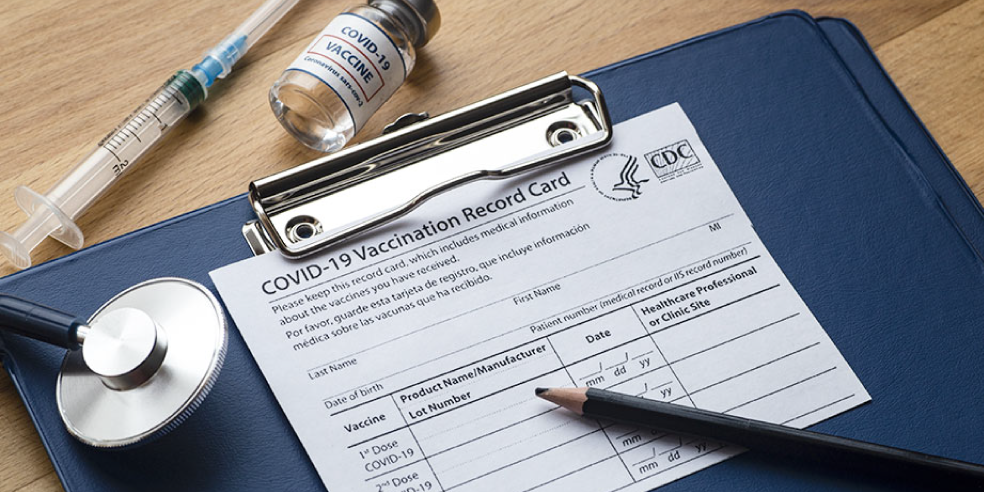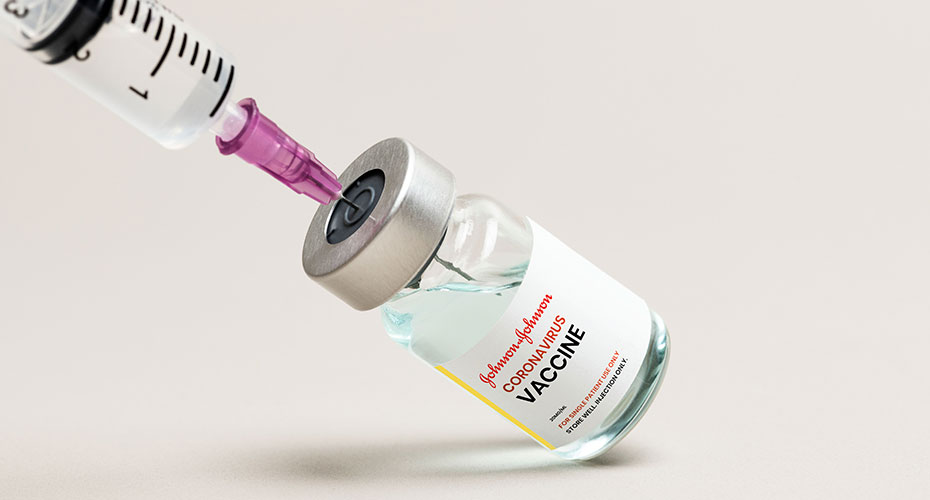Mar 3, 2021
What you need to know about the Johnson & Johnson vaccine
The U.S. Food and Drug Administration has now given emergency use authorization to three vaccines: one made by Pfizer and BioNTech, one developed by Cambridge, Mass.-based Moderna, and the newest, developed by Johnson & Johnson’s Janssen Pharmaceutica in collaboration with Boston’s Beth Israel Deaconess Medical Center. Most Americans are receiving a Pfizer or Moderna vaccine, due to J&J manufacturing delays.
All three vaccines have proven effective, and all three are covered by health plans, including Blue Cross Blue Shield of Massachusetts, with no out-of-pocket cost.
Here is what you need to know about the Johnson & Johnson vaccine.
Strong clinical trial results
The FDA requires extensive evidence for emergency authorization of a vaccine – in this case, data from a diverse group of nearly 22,000 volunteers who have been monitored for months.
The Johnson & Johnson vaccine was 100% effective at preventing COVID-19 illness leading to hospitalization or death in clinical trials, and was tested successfully against a new, highly transmissible South Africa variant, the FDA found.
Clinical trial results 28 days after vaccination also found the Johnson & Johnson vaccine was approximately 72% effective in preventing moderate illness in U.S. trials, and 85% effective in preventing severe illness – rates that far exceed the 50% threshold set by the FDA for emergency authorization.
The vaccine is authorized for adults 18 and older.
In late April, the U.S. Food and Drug Administration and the U.S. Centers for Disease Control added a warning to the J&J vaccine label noting the risk for a rare blood-clotting disorder after 15 cases were identified in young women, including three who died. An FDA panel determined the vaccine’s benefits far outweighed the risks and that failing to use it would lead to more deaths than the clotting disorder might cause. More than 7 million people have received the vaccine in the U.S.
How does the Johnson & Johnson vaccine work?
Vaccines, the greatest advancement of modern medicine, safely mimic viral or bacterial infections and train the body’s own natural immune system to quickly and effectively fight a future infection. If a vaccine recipient is later infected with the virus or bacteria, the immune system will be equipped to fight it off and prevent illness.
Traditionally, vaccines have used a live or weakened virus or viral proteins to trigger the body's natural immune system. The Pfizer and Moderna vaccines, given in two doses, are what is known as “mRNA vaccines.” Instead of using the actual virus, they deliver a fat bubble – a lipid – containing messenger RNA that trains the immune system.
The Johnson & Johnson vaccine is what’s known as a “viral vector vaccine.” The process, which has been researched for decades and is currently used in an Ebola vaccine, uses a harmless cold virus – an adenovirus -- to deliver a tiny fragment of DNA that carries the blueprint for a spiky protein found on the surface of the coronavirus.

When the Johnson & Johnson shot is given, the harmless cold virus enters the body’s cells, which then follow the genetic instructions to construct a replica of the harmless coronavirus spike protein. The body’s natural immune system, switched on by the adenovirus, quickly notices the new protein and makes antibodies against it that will protect the person if they are ever exposed to the SARS-CoV-2 virus.
“It’s a highly effective vaccine. And it can’t give anyone COVID, because it just contains instructions for harmless spike proteins,” says Desiree Otenti, senior director of medical policy and program implementation for Blue Cross Blue Shield of Massachusetts. “It can’t give you a cold either, since the adenovirus is modified to prevent it from replicating or causing illness.”
Adenovirus vaccines have used in human populations before, Otenti notes. “Although the Johnson & Johnson vaccine is new, the science isn’t.”

Side effects?
Just as with a flu shot, some Johnson & Johnson vaccine recipients have a sore arm after getting the shot. About half experience a headache or fatigue for a day or two. Smaller numbers experience short-term muscle aches or nausea. These are signs of the body's natural immune system responding to the vaccine so that a future infection will be fought off quickly.
“These reassuring signs are commonly seen with vaccinations, including the booster shots adults receive for protection against pneumonia, flu, and tetanus,” says Dr. Ashley Yeats, a board certified family physician and vice president of medical operations for Blue Cross Blue Shield of Massachusetts.
Women under 50 should be aware of potential signs of the rare blood clots noted by the FDA. If you develop severe headaches, abdominal pain, leg pain or shortness of breath after vaccination (symptoms generally begin about a week later), contact your primary care or emergency provider immediately. The FDA is providing guidance to clinicians regarding the unique treatment required for what is known as thrombosis-thrombocytopenia syndrome. Its precise cause is still being investigated.
As with all vaccines, research and monitoring is ongoing, and will evaluate whether there are any long-term effects, as well as how effective the vaccine is in pregnant women and certain immunocompromised populations.
Vaccination is free, and everyone is now eligible
Read more about how to sign up for a COVID-19 shot – and get a ride, if you need one

Takeaway: A life-saving advancement
The demand for shots currently outstrips the supply, and the J&J vaccine can provide protection, helping to stem the pandemic before more harmful or transmissible variants can develop.
“These three COVID-19 vaccines,” Otenti said, “are essential tools to help us protect our loved ones and return to our lives.”

